Router Setup
In the digital age, we have become more connected than ever before. Our devices, homes, and workplaces rely heavily on internet connectivity to function efficiently. Routers, Virtual Private Networks (VPPs), and mesh networks are essential to this intricate web of connectivity, which is critical in providing secure, reliable, and efficient internet access.
 Routers are the central hub connecting your devices to the World Wide Web. A well-set router optimizes your internet connectivity, ensuring you enjoy seamless browsing, streaming, and gaming experiences. On the contrary, a poor router setup can lead to poor internet speed and connectivity issues and even create potential security risks. Therefore, understanding that properly setting up a new router is crucial for anyone looking to leverage the internet’s power fully.
Routers are the central hub connecting your devices to the World Wide Web. A well-set router optimizes your internet connectivity, ensuring you enjoy seamless browsing, streaming, and gaming experiences. On the contrary, a poor router setup can lead to poor internet speed and connectivity issues and even create potential security risks. Therefore, understanding that properly setting up a new router is crucial for anyone looking to leverage the internet’s power fully.
Online privacy and security concerns are more prevalent than ever as we become more interconnected. A VPN is a tool that offers a solution to these challenges. It encrypts your online traffic, keeping your data safe from potential intruders. By setting up VPN on router, you extend this security to all devices connected to your network, an important step towards achieving comprehensive online privacy and security.
Finally, we’ll delve into the world of mesh network setup. These systems redefine how Wi-Fi networks operate, removing ‘dead zones’ and providing uniform, high-speed internet connectivity across larger areas. Whether you have a large home or run a business with a vast workspace, understanding that setting up a mesh network can help ensure you enjoy stable and consistent internet connectivity wherever you are within your network’s range.
This blog post will provide a detailed guide on setting up wifi router, setup VPN on router, & mesh network setup. By the end of it, you should be well-equipped to optimize your online experience while maintaining robust security measures. Whether you’re a seasoned tech enthusiast or a beginner looking to enhance your home or office network, there’s something for everyone here.
Wireless Router Setup:
A router is a networking device that directs data packets between computer networks, primarily between your devices (like computers, smartphones, or smart home devices) and the internet. The data packets move via a process known as routing, where the router analyzes the data packet’s destination and chooses the best path for the packet to reach its target.
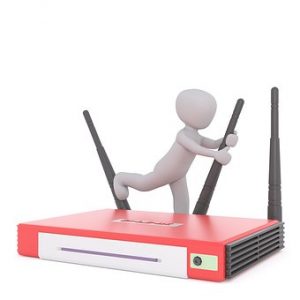 While doing the wifi router setup, router connects to your modem, which provides the internet connection from your Internet Service Provider (ISP). Once the router processes the data from the modem, it transmits this data to the appropriate device in your network via wired Ethernet or wireless Wi-Fi connection. It’s the backbone of any home or office network, enabling multiple devices to share internet connectivity.
While doing the wifi router setup, router connects to your modem, which provides the internet connection from your Internet Service Provider (ISP). Once the router processes the data from the modem, it transmits this data to the appropriate device in your network via wired Ethernet or wireless Wi-Fi connection. It’s the backbone of any home or office network, enabling multiple devices to share internet connectivity.
Your router is the soul of your home or office network, and choosing the right one is critical. Routers come in all shapes and sizes, with different speed capabilities, security features, and additional functionalities like USB ports or QoS settings. Consider factors for example the size of your space, the number of devices you expect to connect, and your typical internet usage (streaming, gaming, browsing, etc.). A high-speed, dual or tri-band router might be worth the investment if you have many devices or heavy internet usage. Below we have mentioned all the steps for setting up wifi router by your own.
Physical Router Setup:
- Placement: Setting up a new router for optimal Wi-Fi coverage, place the router in a central location, away from physical obstructions like walls or large furniture, and electronic devices that may cause interference, such as microwaves or cordless phones. The router should be in an elevated position, such as on a shelf.
- Connection with Modem: while setting up wifi router, you have to connect your router to the modem using an Ethernet cable. One end goes into the modem’s Ethernet port, and the other goes into the router’s WAN (Internet) port.
- Powering Up: After setting up wireless router physically, you have to plug your router into a power source and turn it on. Wait until the indicator lights show it’s ready for setup (typically, the power light should be stable and not blinking).
Configuring the Router Setup settings:
- Accessing Router Settings via Web Interface: While setting up wifi router, most of them can be configured via a web interface. This usually involves typing the router’s IP address into your web browser’s address bar, then entering the default username and password (found in your router’s manual).
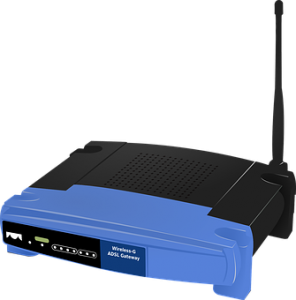
- Configuring Basic Settings: Change the network name (SSID) and set a strong password. You may also choose the Wi-Fi band (2.4 GHz or 5 GHz) depending on your router capabilities and needs.
- Configuring Advanced Settings: Setting up wireless router settings may include QoS settings (to prioritize certain types of traffic), port forwarding (for specific applications or games), and parental controls.
Securing Your Router:
- Changing Default Login Credentials: After completing the wifi router setup change the default login credentials for your router’s web interface to prevent unauthorized access. Choose a strong, unique password.
- Using Strong Wi-Fi Encryption: Ensure your Wi-Fi network is using strong encryption, ideally WPA3, or at least WPA2. This prevents unauthorized devices from connecting to your network.
- Updating Firmware Regularly: Firmware updates often include security patches. Check your router manufacturer’s website or the router’s web interface regularly for updates.
Setting up a new router correctly is the first step in creating a secure, efficient home or office network. The following next sections will discuss how to add a layer of security by installing a VPN on your router and how to extend your network’s reach using a mesh network.
Setup VPN on Router:
A Virtual Private Network, or VPN, is a service which creates a secure, encrypted connection between your device and internet. When you’re connected to a VPN, all your internet traffic is sent over an encrypted virtual tunnel to a remote server functioned by the VPN service. This process masks your IP address and makes your online activity virtually untraceable, providing a substantial layer of privacy and security.
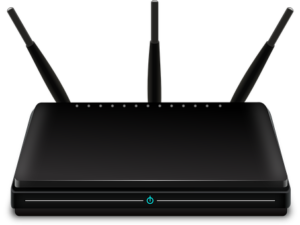 VPNs are designed to protect your data, ensure your privacy, and allow you to access geographically restricted content by masking your real IP address and location. It’s like having a private, secure passage to the internet where no one else, including hackers, your ISP, or even governments, can see what you’re doing.
VPNs are designed to protect your data, ensure your privacy, and allow you to access geographically restricted content by masking your real IP address and location. It’s like having a private, secure passage to the internet where no one else, including hackers, your ISP, or even governments, can see what you’re doing.
When you install a VPN on your router, all devices connected to that router will be under the VPN’s protection. This ensures the security and privacy of all your devices without the need for individual VPN installations. Additionally, it can provide VPN protection to devices that normally wouldn’t support VPN apps, like some smart home devices or gaming consoles.
Not all VPNs are compatible with all routers, and not all routers support VPN setups. It’s important to check compatibility before proceeding. OpenVPN is a widely used VPN protocol that is compatible with many routers. Some VPN services also offer router-based solutions and provide step-by-step guides for setup.
Setting Up VPN on Router:
- Choosing a VPN Provider: For setting up VPN on router, you’ll need to choose a VPN provider that fits your needs. Consider factors like the provider’s reputation, security features, number of servers, location of servers, and price.
- Configuring VPN Settings on the Router: You’ll need to log into your router’s settings (like when you initially set it up), locate the VPN settings, and enter the details provided by your chosen VPN service. This usually includes server locations, your VPN username and password, and sometimes specific security settings.
- Testing VPN Connection: After you’ve configured the VPN on your router, it’s important to test if it’s working correctly. You can use online services to check your IP address and ensure it matches the location of your VPN server.
Fix Common VPN Issues on Routers:
Some common issues include slow internet speeds, connection dropping, or difficulty connecting to certain servers. The VPN provider’s support team can often assist with these issues. However, if you experience a significant slowdown in your internet speed, try a different VPN server, as some can become crowded and slow down.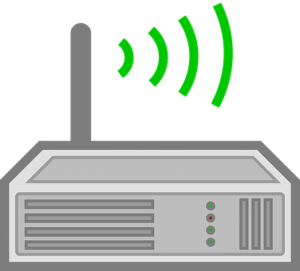
Setting up a VPN on a router, a significant step in enhancing your online privacy and security. However, a mesh network is a great solution to ensure seamless connectivity across a larger area. The next following section will guide you on setting up a mesh network.
Mesh WiFi Setup:
A mesh network, generally is a group of routers (known as nodes) that communicate with each other to distribute network connections across a large area effectively. A mesh network uses multiple Wi-Fi nodes instead of having a single router providing Wi-Fi coverage for your entire home or office.
In a mesh network, only one node must be physically connected to your modem. The other nodes need power and will connect wirelessly to the main node, redistributing the Wi-Fi signal evenly throughout your space. This eliminates common issues with Wi-Fi coverage, such as ‘dead zones’ in areas too far from the router.
A mesh network comprises a series of nodes or points – typically two or three – that are spread throughout your home or office. Unlike traditional Wi-Fi extenders, these nodes are part of a single network and share the same SSID and password. In essence, you’ll need a mesh Wi-Fi kit, which usually includes the main router and the additional nodes.
Setting Up Mesh Network:
- Placement of Mesh Nodes: For Mesh Wifi setup, placing nodes is crucial for good network performance. The main node will connect directly to your modem, and the additional nodes should be spread out so they can maintain a strong connection to the main node or another node. Avoid physical barriers as much as possible.
- Configuration and Connection with Main Router: After placing your nodes, you’ll need to connect your main node to your modem and power it on. Then, use the manufacturer’s app or web interface for Mesh wifi setup. This usually involves creating a network name (SSID) and password, and following the steps to connect the other nodes.
- Configure Mesh Network Settings: Further configuration may be needed based on your specific needs. This could include setting up guest networks, parental controls, or device prioritization settings.
Advantages of a Mesh Network over Traditional Wi-Fi Setups:
 A mesh network setup has many advantages over traditional Wi-Fi setups. It offers improved Wi-Fi coverage in large homes or offices, eliminates ‘dead zones’, and provides seamless transition between nodes (meaning your device won’t disconnect and reconnect when moving between nodes).
A mesh network setup has many advantages over traditional Wi-Fi setups. It offers improved Wi-Fi coverage in large homes or offices, eliminates ‘dead zones’, and provides seamless transition between nodes (meaning your device won’t disconnect and reconnect when moving between nodes).
Troubleshooting Common Mesh Network Setup Issues:
Issues can arise when setting up mesh network, including difficulty connecting nodes or poor signal strength. In such cases, adjusting the placement of nodes, updating the system’s firmware, or changing Wi-Fi channels to avoid interference can often help.
Setting up a mesh network is great option to ensure stable and consistent Wi-Fi coverage throughout your home or office. With your router setup properly, a VPN installed for security, and a mesh network to cover every corner, you’re now equipped to make the most of your internet connectivity while ensuring a secure and private connection.
Conclusion:
Properly setting up a new router and network is not just about getting the internet up and running. It’s about ensuring your connectivity is optimized, secure, and suited to your needs. Remember, your router is the gateway to the internet for all your devices – having it correctly configured and secured is of utmost importance.
We also discussed how to setup VPN on router, a step that can greatly enhance your online security and privacy. By encrypting all data that leaves your network, a VPN can help protect you from cyber threats, ensure your online activities remain private, and even give you access to more content by bypassing geographical restrictions. Remember to follow all the steps mentioned for setting up a VPN on a router.
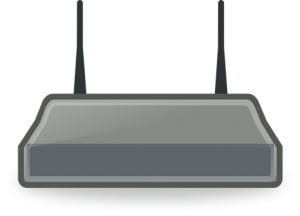 Finally, we explored mesh wifi setup process and how they can improve Wi-Fi coverage in larger homes and offices. By having multiple nodes working together to distribute Wi-Fi, a mesh network can eliminate ‘dead zones’ and ensure a more consistent and reliable connection throughout your space.
Finally, we explored mesh wifi setup process and how they can improve Wi-Fi coverage in larger homes and offices. By having multiple nodes working together to distribute Wi-Fi, a mesh network can eliminate ‘dead zones’ and ensure a more consistent and reliable connection throughout your space.
By following the steps outlined for wireless router setup, Mesh network setup & setup VPN on router in this blog, now you know how to take control of your home or office network. You can optimize your internet speed, secure your online activities, and ensure your Wi-Fi covers as much area as you need. Remember that technology is ever-evolving, and it’s essential to keep your devices updated and continue learning about advancements in network technology to get the best out of your connectivity. Users can also navigate the website’s Homepage to know more about specific Router Brand support services.

